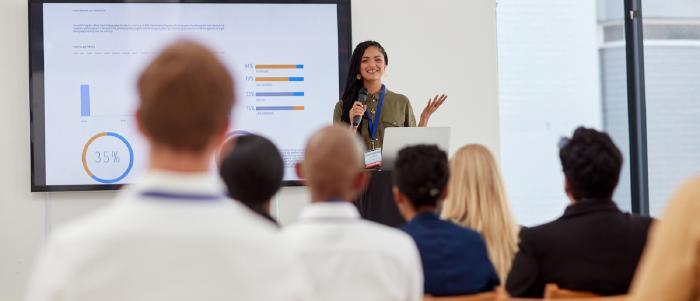
Oct 3 2022
7 min read

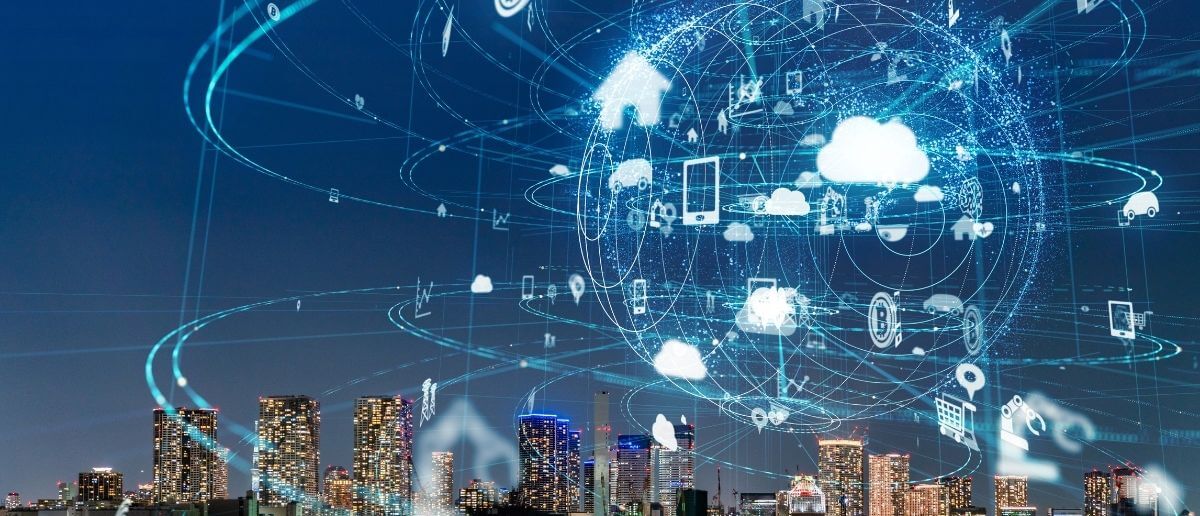
Mar
The internet of things or IoT is the gift of technology to humankind that has made life easier and faster.
When you ask Alexa to play your favorite playlist on Spotify, she knows exactly how to lift your spirit without even making you turn your head. And how she accomplishes that somewhat explains the use of IoT.
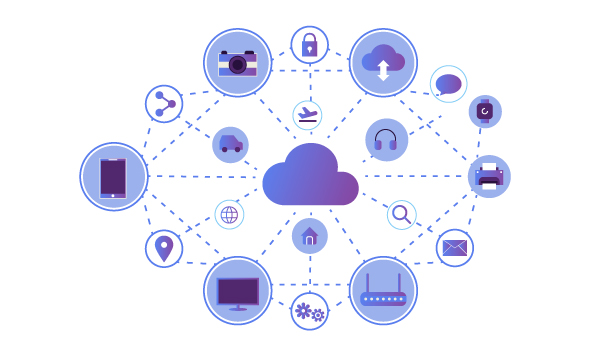
The internet of things, or IoT, is a technology that creates a complex network of seamlessly connected physical objects. The objects can pull, swap and respond to data in real-time within the same shared network, using various sensors.
Let’s simplify the concept with a few real-life examples.
You have come across the term ‘office automation’ or ‘home automation,’ right?
No? All right; what about ‘smart city’? That’s a buzz now all over the country?
In fact, many of us have a smartwatch or intelligent ACs at home. Now, these are handy examples of IoT devices.
Ordinary home & office appliances start acting smart as they execute your commands through a brilliant infusion of technological building blocks.
According to statistics, the global expenses focused on IoT will reach USD 1.1 trillion by 2023. By the time we get to 2025, the world will have 75 billion IoT devices in use!
With so many devices, sensors, smart wearables, and whatnot, the presence of the internet won’t be felt; it will become a part of our all-time existence, as predicted by Eric Schmidt, former Google & Alphabet Executive Chairman.
The urge of man to stay connected with everything and to have information of all sorts in their pocket has given rise to the use of IoT devices. IoTs are fueling the growth of intelligent business models. Hence, its popularity is growing in every business sector besides its extensive application in the domestic sphere.
IoT-driven work management, control of business work processes, remote problem solving, and live monitoring of industrial functions help the world around us move faster and smoother.
Here are the top 12 examples showing how the Internet of Things can bring a revolutionary change to almost every industry.
Your retail business can grow in leaps and bounds with IoT integration. Let’s see how.
In-store IoT sensors can gather data on customers’ purchase journeys, analyze their shopping habits, and share insights with the marketing team for improved brand communication.
This analysis helps the marketing team redesign their in-store digital signage content and develop better offers.
In-store cameras with IoT integration can help you track wait times in queues. You get an instant notification. So, if long lines build up during the checkout, you can think to divert your resources to those areas.
The digital screens installed in retail stores can be fitted with AI cameras that roughly analyze a customer’s age, sex, and race and predict the customer’s shopping preferences. It can then prompt the digital signage software to show relevant content to the customer.
Intelligent digital solutions have their mark on the traffic management system as well. Traffic congestion tracking, vehicle telematics, surveillance systems, and on-road security can be improved manifold using IoT.
Tolls and ticketing can be automated too. IoT can detect the arrival of a car at the toll point and accordingly remove the charge and lift the barrier. Now, wouldn’t it make our lives easier!
In fact, the payment for tolls can also be made automated via e-wallets of the car owners’ phones.
How else can IoT help in traffic and driving management?
Monitoring distance traveled and fuel consumption, and intelligent suggestions based on these data
High-speed alerts to prevent fatal risks
Smart parking that sends data on nearest available spots in a parking space
Vehicle load monitoring to keep the journey safe
Superior fleet management ensures substantial savings, better asset traceability, and more security.
Tracking lost vehicles more efficiently with RFID (Radio Frequency Identification)
Realizing traffic patterns that can help transport authorities design roadways and deploy traffic management resources.
If there is one scenario where IoT can make a remarkable difference, it is during emergencies. Even at this age and time, we don’t have optimal readiness for critical situations.
The conventional route of communicating a disaster alert— from the disaster-monitoring authorities to the community— takes time that isn’t always affordable.
IoT can connect multiple ground sensors (like Seismometers, lightning detectors) to the state authorties’ databases and CAP (Common Alerting Protocol). These servers can be further networked with digital billboards, public office signage screens, and Flight Information Display Systems (FIDS) as well as vehicle dashboards.
The result? Better disaster management.
However, not all emergencies are natural crises. During accidents and mishaps like fire outbreaks, the rescue team should not have to wait to locate the place of occurrence and prolong the whole process causing more casualties. IoT-enabled digital signage can resolve the issue by showing the exact location of the disaster on the screen. How? With the help of sensors, of course!
While speeding to a fire scene, the rescue team will see all the details: the exact scene location, which sensors have triggered the alert, number of people trapped in the building, entrances, and exits.
This will speed up the whole process by helping the emergency squad plan the evacuation immediately and resolve the situation with greater precision.
Here’s a video example of how IoT can create a safer world for us:
Another Internet of Things example for the transportation industry is the intelligent PIDS. PIDS or Passenger Information Display Systems are digital display systems that show real-time vehicle updates besides other content.
The PIDS software pulls data from the Automatic Vehicle Locating Systems (AVLS) and shows it on digital screens deployed at airports, taxi hubs, subways & bus stops.
Many modern transportation hubs now use a Bus Information System (BIS) or Flight Information Display System (FIDS) to keep commuters updated with up-to-the-minute details like:
The vehicle’s live location
The estimated time of arrival and departure
The notifications of canceled or delayed flights & trains
The boarding gate number
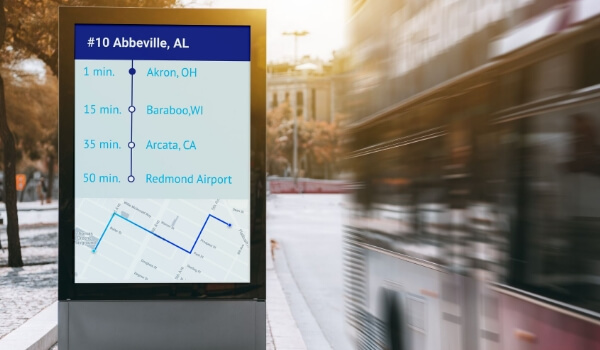
The screens can display more than just the vehicle time & location. It can display the drivers’ information, the number of passengers, and traffic rule violations.
The screen content management system can also pull data from Google Traffic to show live traffic maps on the PIS displays. Digital signage screens at airports & bus stops can also be connected with AQI & temperature sensors to show real-time air quality index and live weather data.
While commuters wait for their vehicles, the screens can be utilized to show trigger-activated advertisements by sensing the demography of the nearest passengers.
Pickcel integrated NEC's AVLS system with its digital signage software to build a smart Bus Rapid Transit System (BRTS). Read the success story of Pickcel's Intelligent PIDS.
The automotive and manufacturing industries would best benefit from IoT solutions. Industrial processes are complex with multiple independent stakeholders, from supply chain to factory engineers to distributors, business partners, and government agencies.
The coordination between these stakeholders coupled with the chances of machine failure often slows down the production.
With industrial IoT, productivity improvement, cost reduction, and efficiency enhancement are easy to accomplish. Industrial IoT solutions create a virtual network of internet-enabled devices like PLCs, IPCs, HMIs, vision cameras, sensors, cloud platforms, data, and AI algorithms.
How do connected devices benefit manufacturing businesses?
Here’s how:
Retrieval of any information on valuable assets of the business via cloud-based asset tracking
Asset health condition monitoring to improve OEE (overall equipment effectiveness)
Alert for machine breakdown and auto-trigger of backup measures
Solve machine problems remotely, saving cost, time, and effort
For the logistics or packaging industry, concerned people can be notified about label runouts before they actually run out so that actions can be taken to prevent stagnation.
Prediction of maintenance needs through data analytics
Real-time control over energy consumption, heating, lighting, and other necessary systems at multiple locations in a factory from a centralized building management system.
Accidents due to architectural failure are not as inconsequential as we may think. From the recent Pittsburgh bridge collapse to the fall of a 12-storied apartment in Miami, the instances of fatalities due to lack of architectural maintenance is a silent cry for some solution.
The internet of things can advance structural health monitoring (SHM) by several years. Sensors positioned at different corners of any building, bridge or monument can share data with remote servers. These servers can constantly analyze the received data and can identify even the smallest of cracks in a structure.
The analyzed data can tell us:
The exact location of the damage
The severity of the damage
The possibility of other damages
The approximate cost of maintenance
Remote monitoring of the overall building architecture makes it easy to predict the weak areas and helps determine the maintenance needs and costs.
So, in what ways has this become a great example of the internet of things?
It ensures structural safety and compliance
It reduces insurance costs and increases the functional utility of the building.
With IoT-based structural health monitoring, engineers can avert any damage from worsening. So, they can easily extend the building’s life with timely repairs and refurbishments of various parts of it.
Accidents during constructions or extensions of a building can be prevented too
Gone are the days when you’d have to constantly worry about your domestic chores the safety of your home when you’re out having dinner with your friends. Constantly wondering if the children are back from school if the oven was left open in a hurry, if the AC is still running with no one at home, and the list goes on.
With IoT gaining more popularity with each passing day, having a smart and continually-connected lifestyle is the new way of living. No matter if you are at a meeting and your guest has arrived early. Let the IoT face detector scan their face and allow them inside by opening the door.
Is car fuel almost empty? Your car will notify you and remind you of departing a little early to fill the fuel. So, you don’t be late at the office anymore due to the long queue at the pump station!
Your audio devices, lights, ACs, curtains, showers, and everything else in the house can be connected to design a fully-aligned home.
Watch this video to understand how you can make life easy with IoT.
Keeping your elderly parents healthy and up-to-date medical check-ups is now easy with IoT-based health monitoring, patient surveillance, and fall detection. Healthcare advancements in 2022 are the most outstanding examples of IoT.
IoT has given a significant boost to telemedicine and remote patient monitoring (RPM).
You can monitor patient vitals like heart rate, blood pressure, and blood sugar from a far-off location. You’ll receive notifications if the patient needs any emergency help.
Older people, especially those who have tendencies to stoop down, remain constantly petrified with accidents thoughts. With IoT-based fall detection technology, you can prevent severe injuries and save many lives.
Smartwatches, intelligent helmets, and the likes are also popular examples of IoT devices. Keeping our weight in check and monitoring our sleep patterns contribute to designing a healthy lifestyle.
IoT creates seamless communication between medical equipment using sensors, monitors, cameras, and detectors. And the data these interconnected devices collect, together they form the information sent through notifications and alerts.
It is clear from the above IoT examples that the internet of things will likely become a life-changing technology for every business, every household, and possibly for scientists.
I was planning to end the blog here. But boy! There are so many other examples of IoT that at least deserve mention. So, here are a few more examples for IoT buffs like you:
New-gen greenhouses that can monitor environmental parameters and switch auto-irrigation if there is low water in the soil, turn off electricity when not required, and notify farmers on their mobile when manual intervention is required
The advertising and media industry can use sensors to optimize their efforts and drive better conversions. But, how? By putting intelligence into dumb screens. For example, a digital advertising display connected with temperature sensors can be programmed to show advertisements of soda pop, energy bar, and sunscreen when the temperature reading shoots above 86℉. This is one of the new and emerging applications of digital signage technology.
Averting accidents on the road is not always possible by the drivers. But what if vehicles could follow the movement patterns, speed, and distance of other cars? That is what V2V communications achieve. When the cars are wirelessly connected, traveling becomes a lot safer.
One of the key areas where IoT can significantly impact is long-term health & public health safety. The recent Coronavirus pandemic has been an eye-opener to how difficult it can be to track and contain a large-scale disease outbreak. But what if billions of our health records could be connected to central servers? A constant analysis of these data can easily map out slowly-emerging cases of similar symptoms that could appear isolated at local levels.
The Internet of Things is a concept that can be applied to a diverse range of industries and challenges. From intelligent screens to intelligent cars, the ultimate goal of IoT is to optimize information flow between various stakeholders.
At Pickcel, we can customize our digital signage software to get draw information from any external or third-party database and show it on digital screens in real-time. These data can be pulled directly from sensors or from information centers.

Take complete control of what you show on your digital signage & how you show it.
Start Free Trial Schedule My Demo
Oct 3 2022
7 min read
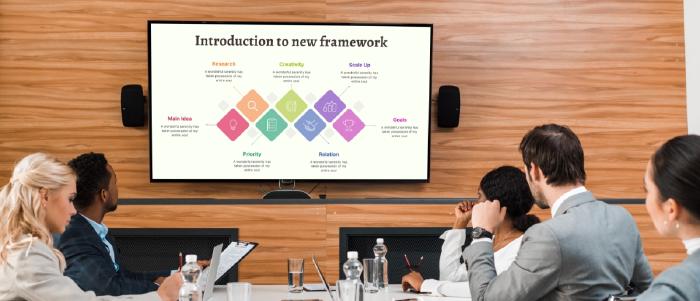
Sep 29 2022
7 min read
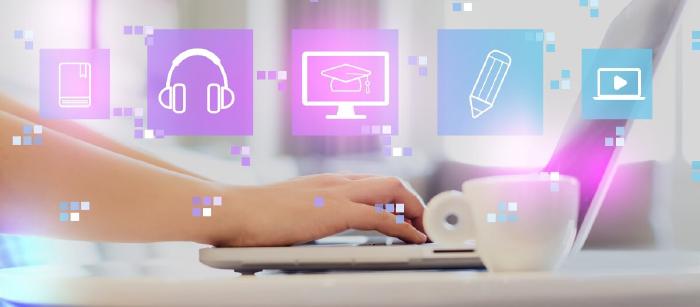
Jun 30 2022
8 min read
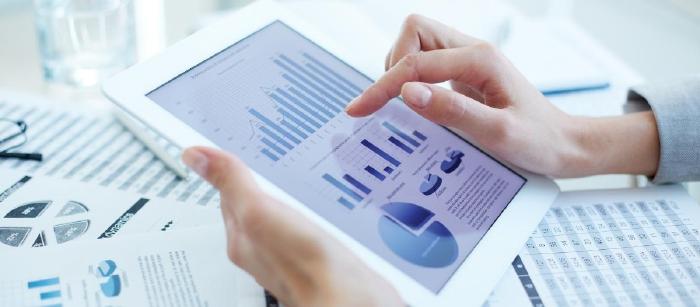
May 26 2022
16 min read